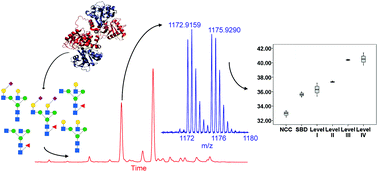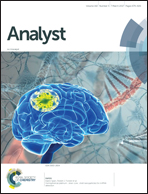Quantitative glycomics using liquid phase separations coupled to mass spectrometry
Abstract
Post-translational modification of proteins by the attachment of glycans is governed by a variety of highly specific enzymes and is associated with fundamental impacts on the parent protein's physical, chemical and biological properties. The inherent connection between cellular physiology and specific glycosylation patterns has been shown to offer potential for diagnostic and prognostic monitoring of altered glycosylation in the disease state. Conversely, glycoprotein based biopharmaceuticals have emerged as dominant therapeutic strategies in the treatment of intricate diseases. Glycosylation present on these biopharmaceuticals represents a major critical quality attribute with impacts on both pharmacokinetics and pharmacodynamics. The structural variety of glycans, based upon their non-template driven assembly, poses a significant analytical challenge for both qualitative and quantitative analysis. Labile monosaccharide constituents, isomeric species and often low sample availability from biological sources necessitates meticulous sample handling, ultra-high-resolution analytical separation and sensitive detection techniques, respectively. In this article a critical review of analytical quantitation approaches using liquid phase separations coupled to mass spectrometry for released glycans of biopharmaceutical and biomedical significance is presented. Considerations associated with sample derivatisation strategies, ionisation, relative quantitation through isotopic as well as isobaric labelling, metabolic/enzymatic incorporation and targeted analysis are all thoroughly discussed.



 Please wait while we load your content...
Please wait while we load your content...